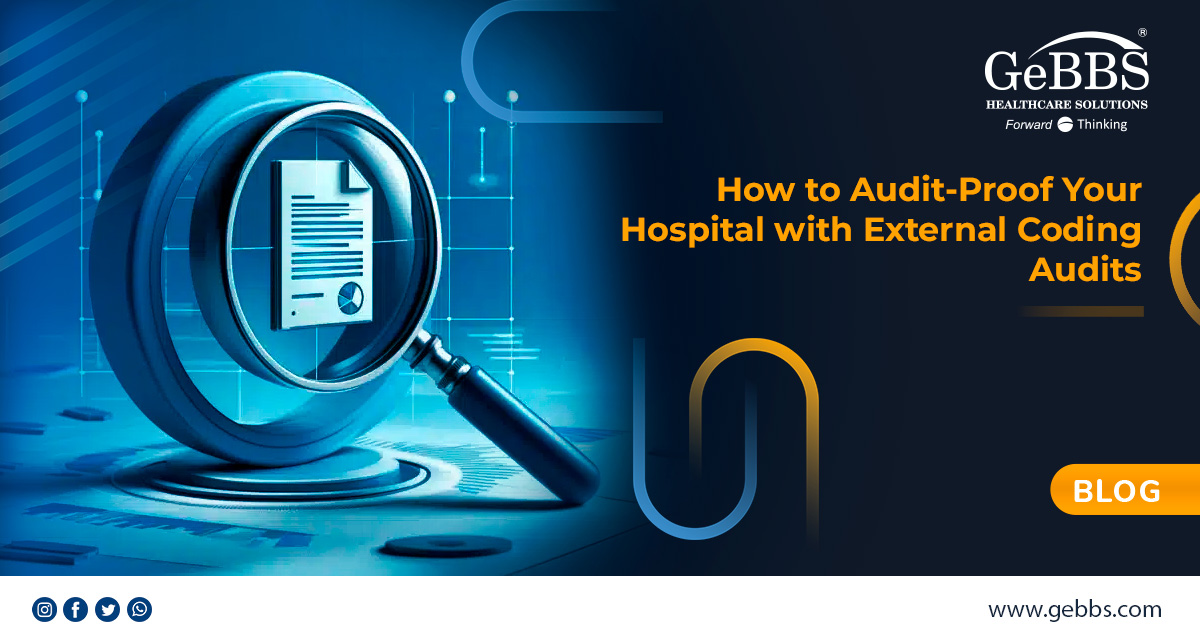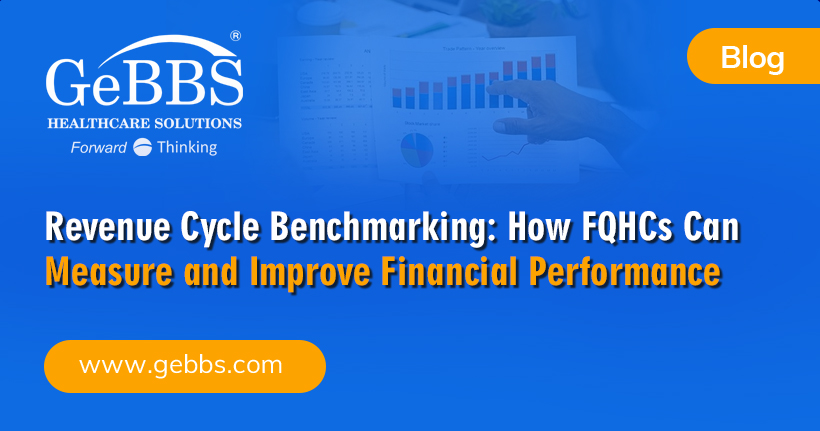You know that sinking feeling when an audit notice hits your inbox? It’s like a thunderclap on a clear day—sudden, jarring, and immediately nerve wracking. Every coding error, documentation slip, or compliance oversight suddenly feels like it’s under a magnifying glass, waiting to cost your hospital time, money, and credibility.
Maybe you’re thinking, “We’ve got solid internal reviews. We should be okay…right?” That’s a reasonable thought. But even the most thorough internal checks can miss blind spots. The truth? It’s not about how good your team is. It’s about catching what’s invisible from the inside.
But here’s the upside. You don’t have to brace for impact every time the word audit comes up. With the right external coding audits, you can spot issues before they snowball into penalties or lost revenue. You’ll shift from reactive firefighting to proactive problem-solving. So, ready to turn those audit fears into confidence? Here’s how to audit-proof your hospital, one practical step at a time.
Step 1: Assess Your Current Risk Areas
Before you can fix a leak, you need to know where the water is getting in. Auditing your hospital’s coding processes is no different. Start by digging through your internal records: old audit results, common coding errors, and any denial trends that keep cropping up. Maybe you’ve noticed certain claims are consistently underpaid or specific departments have more compliance violations than others. These patterns are more than coincidences. They’re flashing warning lights.
Next, listen to your team. HIM professionals, compliance officers, and coders are living this reality every day. What challenges are they facing? What bottlenecks slow them down? Their firsthand insights can highlight operational pain points no spreadsheet ever will.
Then, pull out historical audit data. Look for weak spots in documentation quality, coding accuracy, and adherence to compliance guidelines. Do some physicians leave out critical information that affects coding? Are specific codes being misapplied? Every detail matters.
Now, take it a step further. Benchmark your performance against CMS guidelines, payer policies, and industry best practices. Even if things look fine internally, external auditors often catch issues you didn’t even know were there.
Step 2: Choose the Right External Coding Audit Partner
When it comes to external coding audits, not every potential partner will fit your needs. You want a firm that specializes in hospital coding. Someone who knows the ins and outs of DRG validation, CMS regulations, and payer requirements. If they’re vague about their experience or dodge your technical questions, that’s a red flag.
Another must have? Real-time reporting. Waiting weeks for results can feel like trying to steer a ship while blindfolded. The right partner delivers actionable feedback quickly, breaking down not just what went wrong but why and how to fix it.
Technology can’t be ignored here, either. Firms using AI-driven or automated audit tools spot patterns faster and more accurately than manual processes. If your potential partner isn’t leveraging tech, they’re leaving valuable insights on the table.
Finally, don’t skip due diligence. Ask for case studies or references from hospitals similar in size or structure to yours. Proven results in a comparable environment mean they’re more likely to help you succeed.
Step 3: Conduct a Baseline External Audit
Once you’ve found the right partner, it’s time to get your baseline. Select a diverse sample of claims—Medicare, Medicaid, private insurance—to paint a full picture of your coding landscape.
Before diving in, ensure alignment between coders and physicians. Are documentation standards clear? Is everyone on the same page about guidelines? Miscommunication here can lead to costly mistakes down the line. Don’t let that happen.
After the audit, compare external results to your internal reviews. Discrepancies? That’s not uncommon. In fact, it’s a sign your internal processes need fine-tuning. Dig deeper into any errors. Are they due to poor documentation, code misclassification, improper modifier usage, or accidental upcoding/downcoding? Each type of mistake requires a different solution.
With those insights, create a risk-based action plan. Prioritize high-impact errors first and develop a structured strategy for training, process adjustments, and better oversight.
Step 4: Implement Corrective Actions and Prevent Future Errors
Now that the weak spots are clear, it’s time to address them head-on. Create targeted training programs for coders, physicians, and billing teams, tailored to the specific issues found in the audit. A one-size-fits-all approach won’t cut it here.
Real-time coding quality monitoring tools can make a huge difference. AI-powered systems can flag potential errors before they become submission problems. It’s like having a second set of expert eyes double checking every code, catching mistakes before they cost you.
Documentation refinement is another critical step. Standardize how physicians document their notes and ensure they align with clinical coding requirements. Consistency cuts down on mistakes and reduces denials.
Consider integrating automated pre-bill audits. These systems catch compliance risks before claims are submitted, saving time and preventing costly denials. And don’t forget regular mini-audits. Quarterly check-ins help track improvements and keep your team sharp.
Step 5: Build an Ongoing External Audit Strategy
Audit-proofing your hospital isn’t a one-and-done project. Schedule regular external coding audits once or twice a year, depending on your risk level. Regular reviews keep your compliance sharp and reduce the risk of unexpected audit penalties.
There’s also a number of other things you can do when it comes to external coding audits. Change up your audit vendors periodically. Fresh eyes spot different issues, and rotating firms ensures you’re getting a well-rounded compliance review. Use your audit results strategically in payer negotiations. Showing a track record of compliance can help you avoid reimbursement clawbacks and improve your leverage. Also, stay up to date on industry changes. CMS guidelines, payer policies, and regulatory updates change frequently, and what was compliant last year might not be today.
Finally, build an internal audit task force. Their job? Turn audit insights into daily action. They’ll help translate external audit findings into improved processes, ensuring compliance becomes part of your hospital’s everyday rhythm.
Go from Audit Anxiety to Operational Excellence with External Coding Audits
Now that you understand how to audit-proof your hospital with external coding audits, you can stay ahead of compliance risks and protect your revenue stream. Imagine it now. The next time an audit notice lands in your inbox, there’s no stomach drop, no rush of panic—just calm confidence. Why? Because you’ve already done the work. Coding errors? Caught early. Documentation gaps? Brought under control. Compliance risks? Handled before they became headaches.
Your team now has clear processes, real-time monitoring, and fewer denials clogging up your revenue cycle. Meetings with payers shift from defensive explanations to proactive negotiations, backed by solid audit results that prove your hospital’s compliance strength.
Instead of reacting to problems, you’re preventing them. And in the process you’re saving time, protecting revenue, and strengthening your hospital’s reputation. With regular external coding audits in place, you’re one step ahead, ready for whatever challenges come next.
That’s not just audit-proofing. It’s peace of mind, operational excellence, and the freedom to focus on what really matters: delivering high-quality patient care. Tired of dreading audits? GeBBS Healthcare Solutions has you covered. Our external coding audits catch errors early, seal documentation gaps, and help you stay ahead of compliance risks. With expert auditors and cutting-edge technology, we deliver actionable insights—not just reports. You’ll boost coding accuracy, reduce denials, and keep your revenue cycle running smoothly. No more last-minute scrambles or audit anxiety. Just confidence that your hospital is ready for anything. Ready to turn audits into an opportunity to strengthen your revenue cycle? Contact us today.






